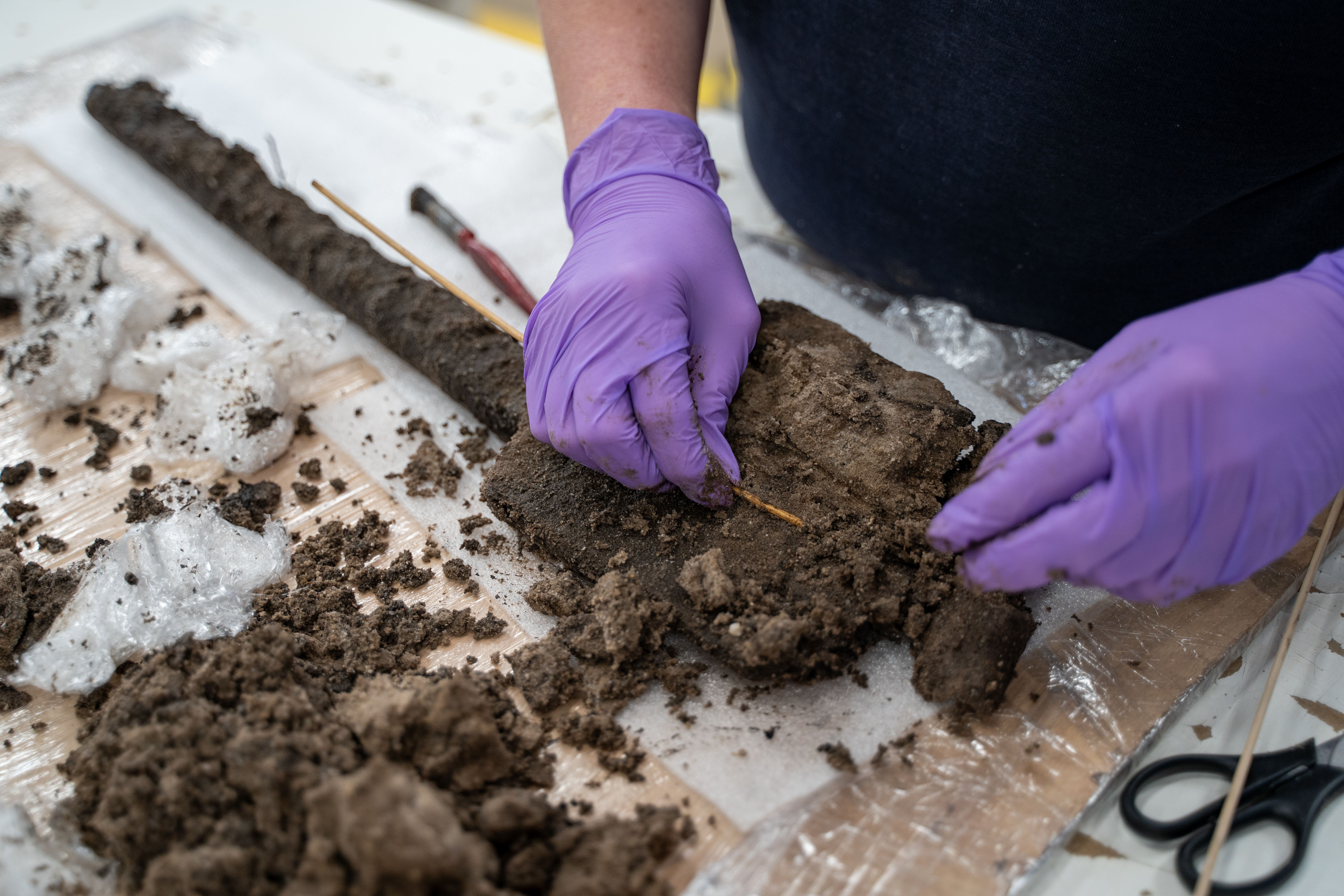‘Unique’ Bronze Age wooden spade found during wetlands creation project
The spade discovered in archaeological excavations in Poole Harbour is 3,500 years old.

Your support helps us to tell the story
From reproductive rights to climate change to Big Tech, The Independent is on the ground when the story is developing. Whether it's investigating the financials of Elon Musk's pro-Trump PAC or producing our latest documentary, 'The A Word', which shines a light on the American women fighting for reproductive rights, we know how important it is to parse out the facts from the messaging.
At such a critical moment in US history, we need reporters on the ground. Your donation allows us to keep sending journalists to speak to both sides of the story.
The Independent is trusted by Americans across the entire political spectrum. And unlike many other quality news outlets, we choose not to lock Americans out of our reporting and analysis with paywalls. We believe quality journalism should be available to everyone, paid for by those who can afford it.
Your support makes all the difference.An extremely rare 3,500-year-old wooden spade has been uncovered by archaeologists working as part of a scheme to create coastal habitat.
The “once-in-a-career find” in Poole Harbour is one of the oldest, most complete wooden spades to have been discovered in the UK, with preliminary scientific data confirming it dates to the Bronze Age, archaeologists from Wessex Archaeology said.
It is very unusual for organic material such as wood to last for so long, surviving for more than three millennia because of the waterlogged nature of the site, and provides evidence of the seasonal use of the landscape by Bronze Age people, they said.
The object was uncovered in archaeological excavations taking place as part of work to create 150 hectares (370 acres) of diverse wetlands for the Moors at Arne project to compensate for habitat being lost to climate change.
Phil Trim, one of the archaeologists who led the recovery of the spade on site, said: “I’d describe it as a once in a career-type find, it’s so rare it’s not something I’d even put on my bucket list that I’d like to find as an archaeologist.
“It’s a really unique object, to find something that’s wooden of that age.”
He said the team initially had a certain amount of scepticism over what they had found, thinking it could be a tree root but that was followed by “amazement when we realised that it was actually a tool, almost complete”.
“It was indescribable, it really was an exciting moment,” he said.
The tool was found in a circular ditch, which archaeologists think were cut by Bronze Age people to keep things in the centre dry from flooding.
Mr Trim said the environment was very wet in the area, even in the Bronze Age, and it was unlikely people were living there full time – with a lack of evidence in the archaeological records of domestic occupation.
“So it lends itself to the theory that what they’re doing is they’re coming in during summer months to exploit some of the resources in that environment, that sort of peaty environment, whether it be the peat itself, or they’re taking reeds for thatch, or any other items like that,” he said.
“The spade itself would be a perfect tool for cutting peat,” he added.
Ed Treasure, from Wessex Archaeology who led the environmental analysis of the spade, said the tool had been preserved due to the waterlogged conditions.
“That occurs where it remains permanently wet through burial and excludes the oxygen.
“So unlike in a normal archaeological site, where organic remains like wood would disappear, they can become preserved for thousands of years, as this one demonstrates.”
But they are also very fragile, even when preserved, he said, adding the “field team did an amazing job lifting this on site”, getting the spade out in one piece to specialists in the lab who are working to conserve it, including creating a 3D model of the tool.
Wessex Archaeology said the spade needs to undergo further conservation work to freeze dry it, after impregnating it with a water-soluble polymer which will prevent the spade from shrinking when the water is extracted during the freeze-drying process, so it can be stored.
Only one other Bronze Age wooden tool, the Brynlow Shovel, found in an ancient mine in Cheshire, has been discovered in the UK, the team said.
The Moors at Arne project, which is being delivered by Kier on behalf of the Environment Agency, RSPB and Natural England, is in response to loss of coastal habitat such as saltmarsh and mudflats as rising sea levels increasingly push up against sea defences in a process known as “coastal squeeze”.
The scheme involves construction of new sea embankments further inland and breaching existing embankments to create new inter-tidal habitats to compensate those being lost, as well as shallow saltwater lagoons, freshwater wetlands and protection of an area with internationally rare plants.
The RSPB, which has managed the site near to its Arne nature reserve for around 28 years, said the project, without which important coastal habitats and their wildlife would be lost, will help protect birds such as redshanks, avocets, common and Sandwich terns.
Dr Treasure said archaeological excavations had taken place where the site was going to be transformed into intertidal habitat, to uncover objects before they were lost.